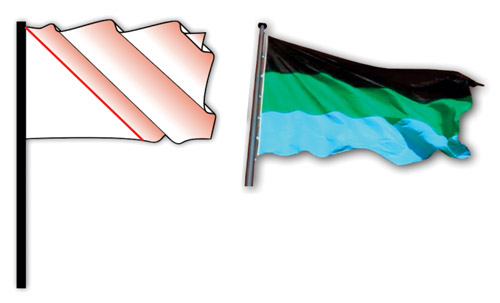Wrinkled roaches and flapping flags
DOI: 10.1063/PT.3.1387
For fluid dynamicists who seek a greater understanding of fluid–solid interactions, a flapping flag is a simple realization of a deformable structure with waves propagating in the direction of fluid flow. From models of such systems, researchers have determined, for example, that stiffer flags stretch nearly flat as they fly, as do those subjected to high fluid drag, whereas heavier flags form more and larger-amplitude wrinkles. Now, Jérôme Hœpffner at the Pierre and Marie Curie University in Paris and Yoshitsugu Naka at the University of Lille in France explain why the flag’s wrinkles are oblique and how those oblique waves counterbalance gravitational forces. The researchers divide a flapping flag into two parts, as seen in the schematic and image: the pinned portion, represented by a right triangle, and the unpinned portion, which they call the roach, a term used for extra material on a sail. As the roach begins to collapse under its weight, it forms oblique waves, an observation that had not been explained by prior models. The researchers find that the flag’s lift comes primarily from those waves. Aerodynamic forces act orthogonal to the wave-crests and impart the periodic rolling and snapping of the upper unpinned corner, which has been shown in old flags to suffer the greatest wear. (J. Hœpffner, Y. Naka, Phys. Rev. Lett. 107, 194502, 2011.)


